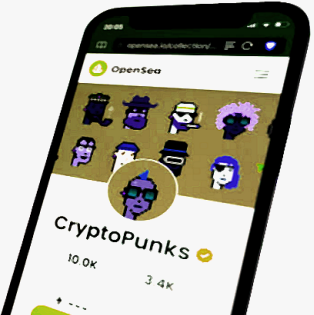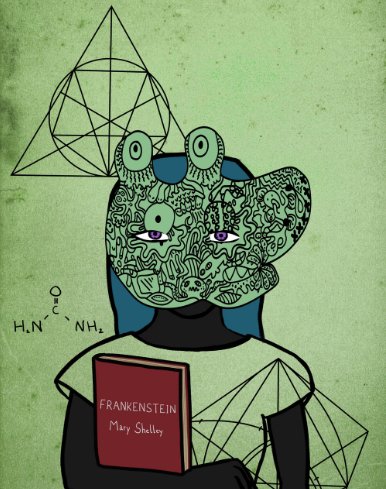Accredited InvestorsAltcoinAnatoli UnitskyAnti-Money Laundering (AML) In CryptoAPIArbitrageArtCoin TokenArticle DirectoryASICAuction Terminology GlossaryBasics of Stock Market InvestingBear MarketBest Crypto Payment Provider In the WorldBitcoinBlockchainBlockchain ConfirmationBlockchain Consensus MechanismBlockchain ForkBlockchain GlossaryBored Ape Yacht ClubBuild a Business That OutperformsBull MarketBuying SkyWay SharesByzantine Fault Tolerance (BFT) ExplainedCasascius CoinCentral Bank Digital Currency (CBDC)Centralized Crypto ExchangeCoinCoinsetCold WalletCollateralCommodity Futures Trading Commission (CFTC)Cross-Chain TechnologyCRUCrypto ExchangeCrypto GlossaryCrypto JokesCrypto Terms to KnowCrypto TickerCryptocurrencyCryptographyCryptojackingCryptounit BlockchainCryptounit GlossaryCryptounit ProgramdApp (Decentralized Application)Dead CoinDecentralized Exchange (DEX)Decentralized Finance (DeFi)Difference Between Bitcoin and EthereumDifferent Ways of Investing MoneyDigital CurrencyDistributed LedgerDo Your Own Research (DYOR)Dollar Cost Averaging (DCA)Dow Jones Industrial Average (DJIA)EncryptionERC-20ERC-721EthereumEvoScentFear Of Missing Out (FOMO)Fear, Uncertainty and Doubt (FUD)Fiat MoneyFNT Fintech CompanyGenesis BlockGlobal Unit PayGlossary of Banking TermsGlossary of Business TermsGlossary of Financial TermsHalvingHODLHot WalletHow Do I Start InvestingHow Rich is Satoshi Nakamoto?How to Create a BlockchainHow to Find Private InvestorsHow to Get Into FintechHow to Program Smart ContractsI Am Thrilled to Be a Part of This Global ProjectInitial Coin Offering (ICO)Initial Public Offering (IPO)Initial Token Offering (ITO)Innovation Basalt TechnologyInnovative Transportation TechnologiesInternational Bank Account Number (IBAN)Investing in Gold Mining StocksInvesting in Gold MiningJagerJoy of Missing Out (JOMO)Know Your Customer (KYC)LedgerLiquidity in CryptocurrencyMaker and Taker Fees in Crypto TradingMarket Capitalization (Market Cap)Meme CoinMetal Credit CardMetaMaskMillenials Now Have Access to Generational WealthMy Best Investment EverNew Digital EvolutionNFT GlossaryOff-Chain TransactionsOn-Chain TransactionsOpen Edition NFTPeer-to-Peer (P2P)Personal Loan GlossaryProbably the Best STO on the MarketProof of Stake (PoS)Real Estate Glossary of TermsReal Estate Investing GlossaryRebase TokenSecurities and Exchange Commission (SEC)Security Token ExchangesSecurity Token Offering (STO)Soulbound Decentralized Identities for Security TokensSoulbound ID Launch by Stobox Proves a SuccessSoulbound TokensStoboxStock Market GlossaryTestimonialsTether Platform and Token (USDT)UnitEx ExchangeUnitsky String TechnologiesUNTBUSDUValidatorWe Started Investing When We Were 25What are Blue Chip NFT?What are Blue Chip Stocks?What are Crypto Assets?What are Crypto Smart Contracts?What are CryptoPunks NFT?What are Digital Assets?What are Digital Collectibles?What are Gas Fees?What are Gas Wars?What are Hashmasks?What are Non Fungible Tokens?What are Non-Sufficient Funds (NSF)?What are Soulbound Tokens (SBT)?What are Stablecoins in Crypto?What are Transactions Per Second (TPS)?What are Utility NFTs?What are Utility Tokens?What Does Burning Crypto Mean?What Does Diamond Hands Mean?What Does Paper Hands Mean?What Does To The Moon Mean?What Does WAGMI Mean?What Happened to Satoshi Nakamoto?What is a 51% Attack?What is a Baby Boomer?What is a Backlink?What is a Banner?What is a Barcode?What is a Bid-Ask Spread in Crypto?What is a Block in Blockchain?What is a Block Reward?What is a Blockchain Address?What is a Blockchain Node?What is a Blockchain Oracle?What is a Blog?What is a Bond?What is a Bot?What is a Broker?What is a Business Accelerator?What is a Cash Cow?What is a Commercial Bank?What is a Commodity?What is a Con?What is a Credit?What is a Credit Limit?What is a Credit Rating?What is a Crypto Airdrop?What is a Crypto Bridge?What is a Crypto Scam?What is a Crypto Token?What is a Crypto Wallet?What is a Crypto Whale?What is a Crypto Winter?What is a Cryptocurrency Public Ledger?What is a Cryptocurrency Roadmap?What is a DAO?What is a Dark Pool?What is a Day Trader?What is a Dead Cat Bounce?What is a Default?What is a Derivative?What is a Digital Credit Card?What is a Fiscal Quarter?What is a Fungible Token?What is a Governance Token?What is a Grace Period?What is a Hard Fork?What is a Hot Wallet?What is a Hybrid Blockchain?What is a Hybrid PoW/PoS?What is a Joint Account?What is a Market Cap?What is a Merkle Tree in Blockchain?What is a Mining Farm?What is a Nonce? What is a PFP NFT?What is a POS System?What is a Prepaid Card?What is a Private Blockchain?What is a Private Key?What is a Public Blockchain?What is a Public Key?What is a Reserve Currency?What is a Ring Signature?What is a Routing Number?What is a Rug Pull in Crypto?What is a Safe Deposit Box?What is a Satoshi?What is a Security Token?What is a Seed Phrase?What is a Shitcoin?What is a Sidechain?What is a Soft Fork?What is a Spot Market?What is a State Bank?What is a SWIFT Code?What is a Tax Identification Number (TIN)?What is a Time Deposit?What is a Transaction Account?What is a Variable Interest Rate?What is a Virtual Assistant (VA)?What is a Virtual Card?What is a Virtual Currency?What is a Visa Card?What is a Whitelist in Crypto?What is a Whitepaper?What is Accounts Payable (AP)?What is AMA in Crypto?What is Amortization?What is an Accrual?What is an ACH Transfer?What is an Actuary?What is an Addendum?What is an Algorithm?What is an Angel Investor?What is an Annuity?What is an Asset?What is an ATM?What is an Atomic Swap?What is an Audit?What is an Avatar?What is an EIN?What is an Embargo?What is an Entrepreneur?What is an IDO (Initial Dex Offering)?What is an Interest Rate?What is an Internet cookie?What is an Investment Bank?What is an NFT Drop?What is an NFT Floor Price?What is an Ommer Block?What is an Orphan Block?What is an Outstanding Check?What is an Overdraft?What is Artificial Intelligence (AI)?What is B2B (Business-to-Business)?What is B2G (Business-to-Government)?What is Bartering?What is Bitcoin Dominance?What is Bitcoin Pizza Day?What is Blockchain Immutability?What is Blockchain Used For?What is BRICS?What is Business-to-Consumer (B2C)?What is C2C (Customer to Customer)?What is Capitalism?What is Catfishing?What is CFD Trading?What is Check Kiting?What is Cloud Mining?What is Communism?What is Content Marketing?What is Decentralization in Blockchain?What is DeFi in Crypto?What is Delisting?What is Depreciation?What is Digital Marketing?What is Diversification?What is Double Spending?What is Dumb Money?What is Dumping?What is Earnings Per Share (EPS)?What is Economics?What is Email Marketing?What is Equity?What is Etherscan?What is Fintech?What is Foreign currency?What is Forex?What is Fundamental Analysis (FA)?What is GameFi?What is Generative Art NFT?What is Gwei?What is Hard Currency?What is Hash Rate?What is Hashing in Blockchain?What is Inflation?What is Initial Game Offering (IGO)?What is Interest?What is Interest Income?What is Mainnet?What is Mastercard?What is Metaverse in Crypto?What is Mining in Cryptocurrency?What is Minting NFT?What is Mobile Banking?What is Money Laundering?What is NFT Alpha?What is NFT Metadata?What is NFT Rarity?What is NGMI Meaning?What is Nominal Interest Rate?What is Online Banking?What is Open-End Credit?What is OpenSea NFT Marketplace?What is Personal Identification Number (PIN)?What is Play-to-Earn?What is Polygon?What is Proof of Authority (PoA)?What is Proof of Work (PoW)?What is Public Key Cryptography?What is Pump and Dump?What is Quantum Computing?What is Refinancing?What is Retail Banking?What is Ripple?What is Sharding?What is Slippage in Crypto?What is Smart Money?What is Solvency?What is Soulbound ID?What is SSL?What is Staking in Cryptocurrency?What is Technical Analysis (TA)?What is Testnet?What is the Ask Price?What is the Better Business Bureau (BBB)?What is the Bid Price?What is the Dark Web?What is the InterPlanetary File System (IPFS)?What is the Gold Standard?What is the Lightning Network?What is the Prime Rate?What is the Sandbox?What is the Secondary Market?What is the World Bank?What is Tier 1 Capital?What is Tokenomics?What is TRC-20?What is Universal Banking?What is Unspent Transaction Output (UTXO)?What is Usury?What is Volatility in Crypto?What is Wash Trading?What is Web3?What is Whisper?What is XRP?What is Zero-Knowledge Proof (ZKP)?Who is Beeple?Who is Satoshi Nakamoto?Who is Vitalik Buterin?Why Tokenization is a Safe HavenWhy You Should Try Your Hand at Trading
What is OpenSea NFT Marketplace?
- Home
- NFT Glossary
- What is OpenSea NFT Marketplace?
Although NFTs like CryptoKitties and CryptoPunks were already popular among early Ethereum users, it wasn't until the 2021 crypto bull run that they gained widespread attention.

According to estimates, NFT trading volumes surged by an astonishing 21,000% between 2020 and 2021, and OpenSea emerged as one of the major beneficiaries of this NFT frenzy.
Presently, OpenSea continues to dominate a significant portion of the NFT trading volume in the ecosystem, with many of the NFT collections featured on social media likely to be found on this platform.
What is OpenSea NFT Marketplace?
OpenSea is a peer-to-peer marketplace that operates on the Ethereum blockchain and facilitates the buying and selling of non-fungible tokens (NFTs). Launched in December 2017 by Devin Finzer and Alex Atallah, OpenSea quickly established itself as one of the largest and most popular NFT marketplaces on the internet.
Unlike traditional marketplaces that focus on a specific category of goods, OpenSea allows users to trade a diverse range of NFTs, including art, music, collectibles, virtual real estate, and gaming items, among others. The platform operates as a decentralized exchange, meaning that buyers and sellers interact with each other directly without the involvement of intermediaries.
OpenSea's popularity stems from several factors, including its user-friendly interface, low fees, and broad selection of NFTs. The platform also enables creators to easily create and list their own NFTs, making it accessible to both established artists and up-and-coming creators.
One of the most notable features of OpenSea is its integration with multiple Ethereum-based marketplaces, including SuperRare, Rarible, and Foundation, among others. This integration allows users to seamlessly buy and sell NFTs from different marketplaces using a single account.
OpenSea has also introduced several innovative features, such as the ability to create bundles of NFTs, fractionalize NFT ownership, and even create custom NFT storefronts. These features have contributed to the platform's popularity and have helped it stay ahead of its competitors in the NFT marketplace space.
Despite its success, OpenSea has faced criticism from some quarters for its perceived lack of quality control, which has led to the proliferation of low-quality and spam NFTs on the platform. However, the company has taken steps to address this issue by implementing stricter guidelines for listing NFTs and introducing a verification system for creators.
A Look at the Strengths and Weaknesses of OpenSea NFT Marketplace
Strengths:
- Free NFT minting using OpenSea's gas-free marketplace
- Royalty payments for original creators
- Easy browsing and purchasing experience for buyers
- Support for multiple crypto wallets
Weaknesses:
- High gas fees during peak network congestion
- Performance issues with degraded website and API
- Instances of improper use and theft resulting in loss for customers
- Community unrest around fundraising plans
OpenSea NFT marketplace provides both creators and buyers with numerous benefits. One of the main advantages for creators is the ability to mint NFTs for free using OpenSea's gas-free marketplace, which means that creators won't have to pay transaction fees on the Ethereum network. Additionally, original creators can receive a royalty payment for every secondary-market sale of their tokens.
Buyers have an easy experience when browsing through NFT collections, with the ability to filter by price, status, native blockchain, and rarity of each token. They can place bids, make offers, or buy NFTs immediately by paying the asking price. Buyers can also see the purchasing history of each NFT, including how many times it was sold, who bought it, and its prices. OpenSea supports more than a dozen crypto wallets, making it accessible to a wide range of users.
However, there are some weaknesses associated with OpenSea. One concern is that because the platform uses the Ethereum blockchain, there may be high gas fees during peak network congestion. OpenSea is currently the top gas guzzler on the Ethereum network. To address this issue, OpenSea added cross-chain support for Polygon and created a gas-free marketplace. Another concern is related to the platform's performance, which often runs with degraded performance.
There have also been instances of improper use and theft resulting in loss for customers. OpenSea's head of product was accused of trading NFTs on insider information, using secret crypto wallets to buy NFT drops before they were listed on the platform's homepage. Additionally, in January 2022, OpenSea suffered a theft of 332 ETH, worth around US$800,000 at the time of the attack. OpenSea contacted affected customers directly and reimbursed them, but stated that the problem is fundamental to blockchain marketplaces.
Finally, OpenSea has experienced community unrest around its fundraising plans. In December 2021, the OpenSea NFT marketplace faced heavy criticism after its CFO (Chief Financial Officer) began plans to take the company public. Users felt that the company should keep its fundraising within the community, through an OpenSea token airdrop. The executive later clarified that the firm was not planning an IPO and that they would involve the community if they did.
A Guide to Creating NFTs on OpenSea
If you're an artist or a musician looking to monetize your digital work, creating NFTs on OpenSea can be a great option. The process of creating NFTs on OpenSea is straightforward and can be done in a few simple steps.
First, navigate to the "Create" tab on the OpenSea website. This will take you to the NFT item creation page. Here, you can add your NFT files, including their names and descriptions. You can also customize your NFT by adding properties, levels, stats, and other attributes to make it unique.
Once you've uploaded your files and customized your NFT, you can then set a price for it. You can choose to sell your NFT through an auction or set a fixed price. If you choose an auction, you can set a reserve price, which is the minimum price you're willing to accept for the NFT.
Once you've set the price, you can then publish your NFT to the OpenSea marketplace. It will then be available for anyone to purchase using cryptocurrency.
Overall, creating NFTs on OpenSea is a simple and accessible way for artists and musicians to monetize their digital work and take advantage of the growing interest in NFTs.
Selling NFTs on OpenSea: A Step-by-Step Guide
To sell your NFTs on OpenSea, you have the option to sell a single item or create a bundle of multiple NFTs to sell together. Here is a step-by-step guide to listing your NFTs for sale on OpenSea NFT Marketplace:
- Go to your profile icon on OpenSea and select the NFTs you want to list from your wallet.
- On the NFT item page, click on the "Sell" tab located at the top right corner of the page.
- The listing page will open, and you will be presented with different sale options to choose from, including fixed-price sales and timed-auction sales.
- Set the price for your NFT, select the currency you want to receive, and choose the type of sale.
- If you choose a timed-auction sale, set the duration of the auction and the minimum bid amount.
- Customize your listing by adding a description, images, and other details that will make your NFT more attractive to potential buyers.
- Review your listing and click the "List item" button to make it available for sale on OpenSea.
Once your NFT is listed for sale, interested buyers can place bids or buy it outright for the listed price. If someone buys your NFT, the sale proceeds will be deposited in your connected wallet.
7 Tips for Securely Storing Your NFTs on OpenSea
In the crypto market, scams are becoming increasingly prevalent. Scammers target crypto users, whether on a crypto exchange or an NFT marketplace. Here are seven tips to help you safeguard your NFTs on OpenSea.
- Do not share your secret recovery phrase with anyone, not even someone posing as an OpenSea support official.
- Ensure that you’re linking to the official website, not one with a similar name but a different domain. Sometimes the difference is easy to miss, so be careful to confirm the site before initiating a transaction.
- When your wallet is linked to a browser, avoid clicking on broken, unknown, and suspicious links to avoid getting hacked.
- Your passwords should be unique, different from the ones you use for other sites.
- Enable two-factor authentication (2FA) to shield yourself from potential attacks.
- Consider using a hardware wallet to store your NFT assets for improved security.
- Do not download attachments from an OpenSea email. OpenSea does not send files to its users, so be cautious of phishing emails.
The Bottom Line
OpenSea is a popular NFT marketplace that offers creators a platform to sell their digital assets and collectors a place to purchase unique and one-of-a-kind NFTs. Despite some concerns around network congestion, platform performance, and security, OpenSea remains a top choice for buying and selling NFTs, offering a user-friendly interface, a variety of payment options, and a wide range of collections to choose from.
Related Articles

Bored Ape Yacht Club
According to the OpenSea NFT marketplace, the BAYC's trading volume on October 14, 2022, was 673,000 ETH.

What are CryptoPunks NFT?
CryptoPunks have become not just a work of art but an investment and status symbol over time. For example...

What are Hashmasks?
These NFTs have gained immense popularity on OpenSea NFT Marketplace, perhaps because they offer creators the ability to shape the artwork, making them one of the...
- Home
- NFT Glossary
- What is OpenSea NFT Marketplace?